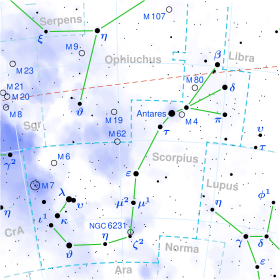Evenstar wrote: ↑Tue Jun 25, 2019 6:06 pm
What a surprise. Let's not talk apparent. Let's pretend we are on a planet in another solar system among these "brightest" stars. Where does the sun fit in?
Any exoplanets? Or are the brightest too bright to "see"?
All the stars on the list are intrinsically brighter than our Sun.
1) The intrinsically faintest of the 25 on the list is Rigil Kentaurus, which consists of a pair of stars,
Alpha Centauri A and
Alpha Centauri B. Actually, Alpha Centauri B is fainter than the Sun, about 0.5 L
☉, but Alpha Centauri A, the "solar twin", is
1.5 L☉. Alpha Centauri A is the same spectral class as the Sun, G2V, but it is a little bit more massive, 1.1 M
☉. Alpha Centauri B is 0.92 M
☉ and spectral class K1V. So why does Alpha Centauri, Rigil Kentaurus, look so bright in our night skies? It is because this triple star (including ultra-faint
Proxima Centauri) is the most nearby of all stars, except the Sun, of course. The distance to Alpha Centauri is only 4.4 light-years.
I think, although I'm not sure, that Alpha Centauri B has a planet.
2) So, counting backwards and beginning with the faintest ones on the list, the next one after Alpha Centauri would be
Procyon (Procyon), spectral class F5IV-V and a little hotter than the Sun (but not much hotter), with a mass of 1.4 M
☉ and a luminosity of
7 L☉, at a distance of some 11 light-years.
3) After Procyon comes
Altair (Altair), A7IV-V, with a mass of 1.7-1.8 M
☉ and a luminosity of
10.6 L☉, at a distance of around 17 light-years.
4) Then we have
Fomalhaut, A3V, with a mass 2 M
☉ and a luminosity of
16 L☉, at a distance of 25 light-years.
Fomalhaut has a planet.
5) Then comes
Sirius, A1V, with a mass of 2.12 M
☉ and a luminosity of
26 L☉, at a distance of 8.6 light-years.
6) Number six is
Vega, A0V, with a mass of 2.3 M
☉ and a luminosity of
36 L☉, at a distance of 25 light-years.
7) Number seven is
Castor, A1V, with a mass of 2.4 M
☉ and a luminosity of
37 L☉, at a distance of 51 light-years.
8) Number eight is
Pollux, K0III, the first true giant on the list. Pollux has exhausted its core hydrogen and become a red giant, albeit a pale and faint one. Its mass is probably around 1.8 M
☉ and its luminosity is
46 L☉.
Pollux has a planet.
Now it's getting complicated. Number 9 might be
Capella, which consists of two components,
93 and
64 L☉, spectral classes G5III and G0III, with masses of 3.0 and 2.5 M
☉, at a distance of 43 light-years. Both components are giants. Then again, number 9 might be
Arcturus, spectral class K2III, which is a single star with a luminosity of
113 L☉ (215 L
☉ is its infrared light is included) and a mass of about 1.5 M
☉, at a distance of 37 light-years.
11) Number eleven is probably
Regulus, spectral class B7IV-V, has a luminosity of
150 L☉ (360 L
☉ if its ultravilolet light is taken into account) and a mass of 3.4 M
☉, at a distance of 79 light-years.
12) Number 12 is probably
Aldebaran, spectral class K5III, with a luminosity of some
160 L☉ (425 L
☉ if infrared light is included) and a mass of 1.7 M
☉, at a distance of 67 light-years.
13) Number 13 is probably
Gacrux of spectral class M4III. Its optical luminosity is about
142 L☉, but its optical + infrared luminosity is about
1,500 L☉. The mass of Gacrux is about 3 M
☉ or less, and it is located at a distance of 88 light-years.
But I'm giving up now. The rest of the stars are all really bright and far away, and many or most of them are either binaries, or multiple stars, or giants, or supergiants. It is too hard to figure out exactly what their masses are, or exactly how bright they are, when you have to consider both their optical and their ultraviolet or infrared light.
Ann
 25 Brightest Stars in the Night Sky
25 Brightest Stars in the Night Sky

